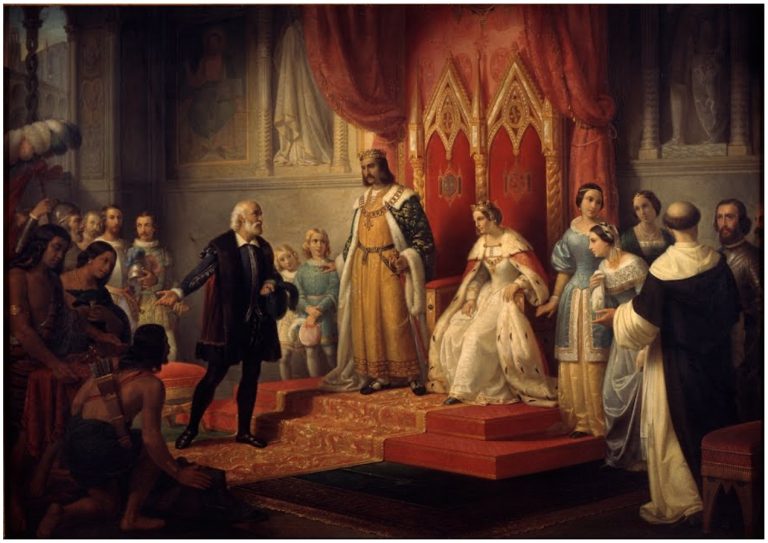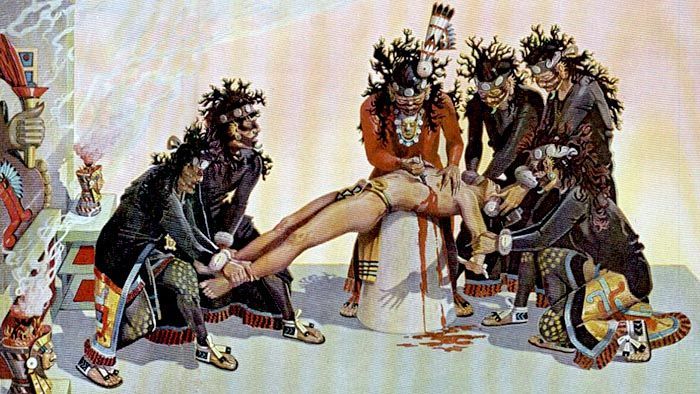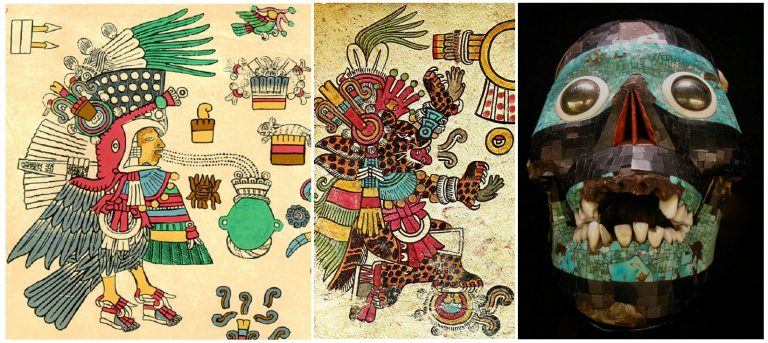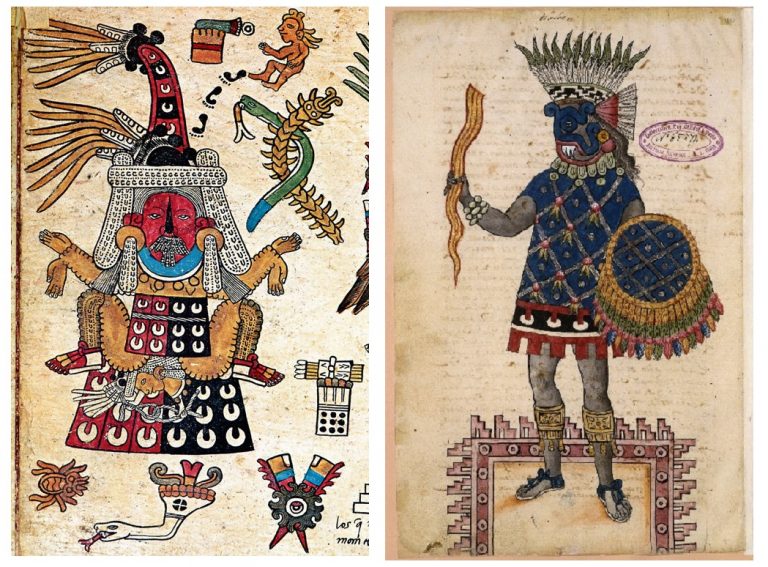Crazed DecisionThe Los Angeles City Council’s recent, crazed decision* to replace Christopher Columbus Day with one celebrating “indigenous peoples” can be traced to the falsification of history and denigration of European man which began in earnest in the 1960s throughout the educational establishment (from grade school through the universities), book publishing, and the print and electronic media. |
 Christopher Columbus at the Court of the Catholic Monarchs (a painting by Juan Cordero). - Click to enlarge Columbus was born in the Republic of Genoa in Italy, but made his exploration voyages (four in all) under the auspices of the Spanish crown. In 1492, just after Ferdinand and Isabella of Spain had reconquered the last Muslim outpost in Spain, they finally agreed to make a deal with Columbus and funded his voyages (the crown later partly reneged on the deal, particularly with respect to the degree of political power Columbus and his appointees were allowed to wield in the new territories – descendants of Columbus were involved in litigation over the matter until 1790).Interestingly, no contemporary portrait of Columbus exists – we have actually no idea what he really looked like. All statues and paintings of the man were made posthumously. A previous attempt to rename Columbus Day ”Indigenous People Day” in Utah was voted down by the Utah Senate in 2016. |
| It is amazing that, as of yet, the federal holiday commemorating the Genovese explorer’s world-changing voyage has not come under attack. It is doubtful that in the current radicalized leftist ideological atmosphere, the national government’s recognition of Columbus will survive much longer.
Most of what has been taught about Christopher Columbus and his holy and heroic patroness has been distorted, lied about, and politicized for the advancement of leftist causes, the most important of which is the smearing of the great European men of the past and to ridicule their descendants’ pride in their glorious heritage. The historical untruths have not stopped with Columbus and Queen Isabella, but are spread about conditions of pre-Columbian societies as well. Instead of an idyllic land where the inhabitants lived in peace and harmony with one another until the evil, conquering white man appeared, life in the pre-Columbian Americas’ was, to say the least, quite grisly. A recent archeological discovery in Mexico City of relics of the ancient Aztec Empire shows again what most knew, prior to the onslaught of leftist historical revisionism, namely that human sacrifice was practiced on a large scale.** |
 Human sacrifice on occasion of the festival of Toxcatl in the month of May – a young man who had been chosen by the priests to impersonate the god Tezcatlipoca for one year (and lived a life of luxury between the annual Toxcatl festivals), was sacrificed on the occasion. - Click to enlarge The Aztecs didn’t believe in wasting sources of protein, so the revelers ate his body thereafter. Tezcatlipoca was a major Aztec god, a kind of multi-purpose deity, but primarily associated with the night sky and war (the “embodiment of change through conflict” according to Mesoamerican studies experts Karl Taube and Mary Miller). His role in Aztec creation myths varies – depending on whether a Quetzalcoatl or Tezcatlipoca worshiper told the story, he came across as a rather more destructive or a rather more constructive entity – but never as a nice guy. Hence, he required appeasement by sacrifice. At one stage more than 100,000 professional priests worked at Tenochtitlan, which suggests that with respect to the widely diverging estimates of the number of sacrifices the Aztecs performed, the upper ranges may be more credible. |
| Archeologists have recently found more than 670 skulls [ed. note: so far] at the site of Templo Mayor, one of the primary temples of the Aztec capital, Tenochtitlan, where human sacrifices were conducted. The new find substantiates the account of Don Andrés de Tapia Motelchiuh, a Spanish soldier who accompanied conquistador Hernán Cortés in 1521, and his description of the discovery of tens of thousands of skulls in the temple that became known as Huey Tzompantli. The number of skulls must have been vast for they “struck fear” in the hearts of the seasoned Spanish explorers. |
 The recently discovered tower of skulls (the first two pictures show a typical “skull rack” made from stone, which were essentially more durable depictions of the real thing used to decorate outer walls. - Click to enlarge The recent find confirms the account of the conquistadors – and it raises new questions. Hitherto it was widely held that mainly enemy soldiers and volunteers were sacrificed, but a great many of the skulls found so far belonged to women and children. It seems the Aztec priests were a lot less fussy about who they sacrificed than historians have thought. In other words, their deference to modern sensibilities appears to have been severely lacking. No noble savages in sight anywhere. As an aside, in 1520 Hernán Cortés led a caravan to Tenochtitlan to subdue a rebellion. He rode ahead with a number of soldiers, while a second party consisting of 45 foot soldiers, 15 conquistadors and at least 350 Maya and other Indian allies of the Spaniards, including about 10 children and a number of animals, followed behind. Recent excavations at the Zultepec-Tecoaque archaeological site in Tlaxcala in Mexico revealed that indigenous Acolhuas people from the Tecoaque village captured the people in the second party, kept them in captivity and ate them over a period of nine months. Only the pigs were not eaten – for some reason the Acolhua seem to have regarded them as unsavory (but they were killed all the same). Cortés later found out about the caravan’s fate and ordered the razing of the village and the execution of its inhabitants. |
Ending Ritual SlaughterThat the Spanish immediately ended this hellish practice is not much spoken about by history professors in their lectures to their gullible students, nor did the Los Angeles City Council refer to the satanic ritual during its announcement. Such inconvenient facts do not fit the liberal paradigm of the evil, marauding conquistadors subjugating the innocent Mesoamerican peoples to Spanish rule. |
 Depictions of the above mentioned Aztec god Tezcatlipoca (a.k.a. “the smoking mirror”) from the Codex Borbonicus, which Aztec priests created around the time of the arrival of the conquistadors. - Click to enlarge One image shows him disguised as a turkey, the other depicts him in his more customary Jaguar costume. The jade mosaic death mask to the right is also an image of the war god. |
| Nor will there be much mention that Columbus’ discovery brought civilization to the pagans and more importantly – and horrifically for the politically-correct – Christianity to the indigenous peoples and a chance for eternal salvation.
The takedown of Columbus is also a swipe at the figure who made his exploits altogether possible. For Queen Isabella and King Ferdinand’s underwriting of the great Genovese Admiral’s voyage came only after they had completed their sacred mission of ridding the Iberian Peninsula of the dreaded Moors. Once accomplished, the Queen fulfilled her promise to finance Columbus. It has been contended by some scholars that the discovery of the New World under Spanish auspices was a reward by Divine Providence for the freeing of Spain of the Mohammedan menace. Instead of enslavement and plunder that leftist historians accuse the Spanish Crown as motives for the exploration, the exact opposite was true, as candidly stated by Columbus himself, who remarked:
|
 One of the best known Aztec gods is the sun god Huitzilopochtli, essentially the chief deity, in whose name most human sacrifices were performed. - Click to enlarge The – ideally still beating – hearts ripped from the breasts of victims were raised up to him in order to give him the power and motivation to make the sun rise every day. And who wouldn’t want the sun to rise every day? Shown above are two lesser, but still quite formidable deities (both images are from the Codex Borbonis). To the left, we see the goddess Tlazolteotl, wearing a flayed skin, in the process of giving birth to Centeotl (the future goddess of Maize). Apart from having an odd fashion sense, this charming goddess had the function of both inspiring and forgiving all kinds of sinful transgressions (such as extra-marital applications of one’s conjugal dipstick; she actually sounds like someone Bill Clinton might consider worshiping). She “inspired vicious desires and caused disease, especially sexually transmitted disease” in her role as the “goddess of filth, lechery and unlawful love”. She was also the “goddess of dirt” and the “eater of ordure”, and as such was thought to purify those who confessed their sins to her. She was depicted with symbols of “divine excrement” around her mouth, or as art historian Cecilia Klein trenchantly referred to it, “holy shit”. To the right we see good old Tlaloc, the fanged, goggles-sporting god of rain and fertility. That sounds fairly harmless, but when he was in a bad mood, he would also bring hail, thunder, leprosy and arthritis. What makes him stand out is what was required to appease him. Merely ripping out still beating hearts was not enough to satisfy this abomination. Tlaloc demanded the sacrifice of children, or more precisely, crying children. The harder they cried before they were dispatched, the better. This may explain the presence of the skulls of children in the Huey Tzompantli. |
Indicators of Decay
Nearly every moral and ethical system ever devised has always condemned ingratitude. Acknowledgment and veneration of the glorious deeds of those of the past upon which a civilization was built is a necessary duty for its preservation.
When a culture’s icons are ignorantly defamed or replaced, it is a sure sign that it is in steep decline. The scuttling of the yearly commemoration of Christopher Columbus’ monumental expeditions by the city of Los Angeles is another ominous indicator of a deeply troubled and disintegrating society.
References:
*Tyler Durden, “Los Angeles Changes ‘Columbus Day’ to ‘Indigenous Peoples Day.’” Zero Hedge. 31 August 2017.
**Reuters, “Tower of Human Skulls in Mexico Casts New Light on Aztec Sacrifices.” 2 July 2107.
*** Quoted in Rev. Frs. Alphonsus Maria Duran, M.J., and Paul Mary Vota, M.J., “Why Apologize for the Spanish Inquisition?” (Chicago: Miles Jesu, 2000), p. 10.
Image captions by PT
Full story here Are you the author? Previous post See more for Next postTags: Human Condition,Miscellaneous,newslettersent






































1 comment
Anonymous
2018-04-07 at 02:08 (UTC 2) Link to this comment
none of this is accurate